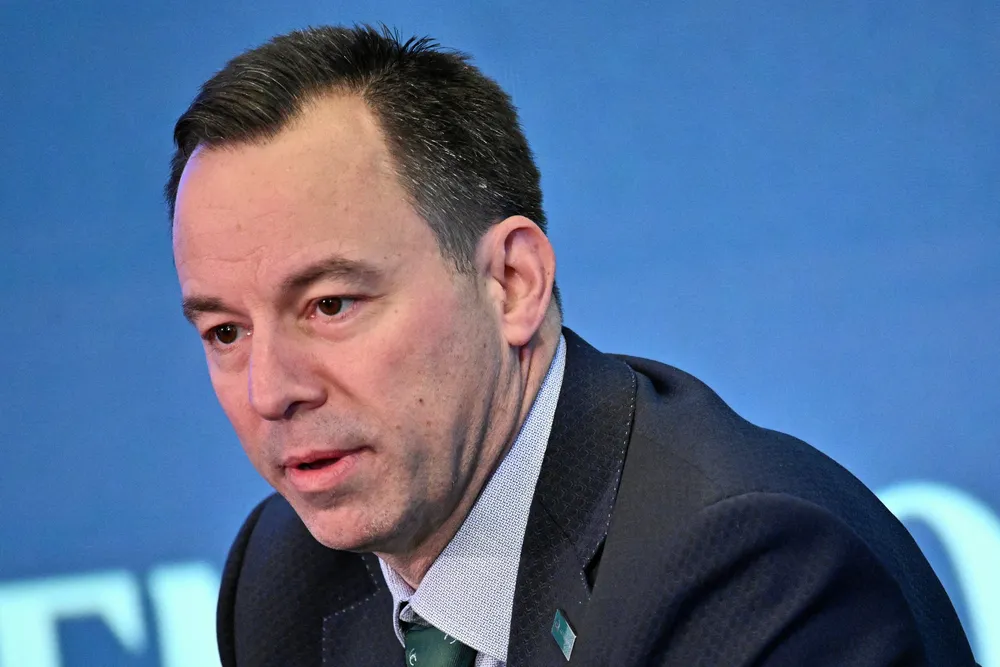GE Vernova chief Strazik weighs up Republican bill's wind impacts
Energy tech giant's CEO says fallout from 'Big Beautiful Bill' remains hard to call with changes still possible

The US onshore wind market is in a wait-and-see position after Republicans in the House of Representatives passed a bill that advances phase-out of federal tax credits and limits projects’ ability to claim them, Scott Strazik, CEO of GE Vernova, said Wednesday.
“I don’t think the market is accepting the bill as it is right now," he told a conference hosted by asset management firm Alliance Bernstein.
The massive 'One Big Beautiful Bill Act' is filled with President Donald Trump’s 2024 campaign promises that include slashing subsidies for renewable energy generation and component manufacturing, and purchase of electric vehicles.
“If the bill stays as it is, there likely will be an acceleration of order activity to try to get as much wind into construction by the end of 2028 if possible, to protect... the incentives,” said Strazik, referring to turbine orders.
"We’re not seeing that orders activity today,” he said. “I think there is still a fair amount of pensive evaluations right now on when to start to accelerate that orders activity in wind in the US.”
The bill is now in the Senate where Republicans with a 53-47 majority are deeply divided over what changes to make with fiscal conservatives calling for more federal spending cuts, and moderates looking to retain at least some of the clean energy incentives.
GE Vernova is the top onshore wind turbine OEM in the US market, the second largest globally after China.
“We do expect there will be an iteration on the existing policy,” said Strazik, who underscored that he believes the vendor is well-positioned to serve the market “wherever the policy goes in the end.”
He added: “But depending on the incentive structure, it may lead to renegotiation that our end-customers have to do with their end-customers, if the planned incentives are not there for them anymore.”
In the medium term, that could lead to even more market softness beyond the near-term push to try and get things done by 2028. “It’s hard to call,” said Strazik, who acknowledged that wind is more dependent on policy than GE Vernova’s grid and power segments.
US onshore wind turbine deliveries totaled 3.9GW in 2024, the lowest level in the past decade.
“We’re going to wait and see,” he said, noting that the OEM is hopeful that orders this quarter will be better than soft first quarter bookings. “It is still not going to be great. I think this is going to take us through until at least into the third quarter before we start to see the market move. But we do see a role for wind.”
GE Vernova expects to deliver close to 2,000 onshore wind turbines worldwide, half the total in 2021 when Strazik pointedly noted, “we didn’t make any money.”
Now, it is running the business much better and is delivering high single-digit Ebitda margins, he said, referring to earnings before interest, taxes, depreciation and amortisation.
Onshore wind in North America is a 5GW to 10GW/yr opportunity in the foreseeable future, far below the 15GW-plus the country likely would need to help meet growing power demand.
If that level of activity does resume, “investors are really going to like our wind business,” he said, highlighting that earlier capital investments by the company would allow it to double turbine production in the US.
“We already spent that money. We’d have to hire people again to work shifts to grow into that volume ramp, but let’s see where the market goes,” he said.
“Today is not really a day to be bombastic on onshore wind orders, admittedly. But if the market comes, we’ve got a very capital-efficient growth trajectory with a business that has a lot of volume leverage,” he argued.
(Copyright)